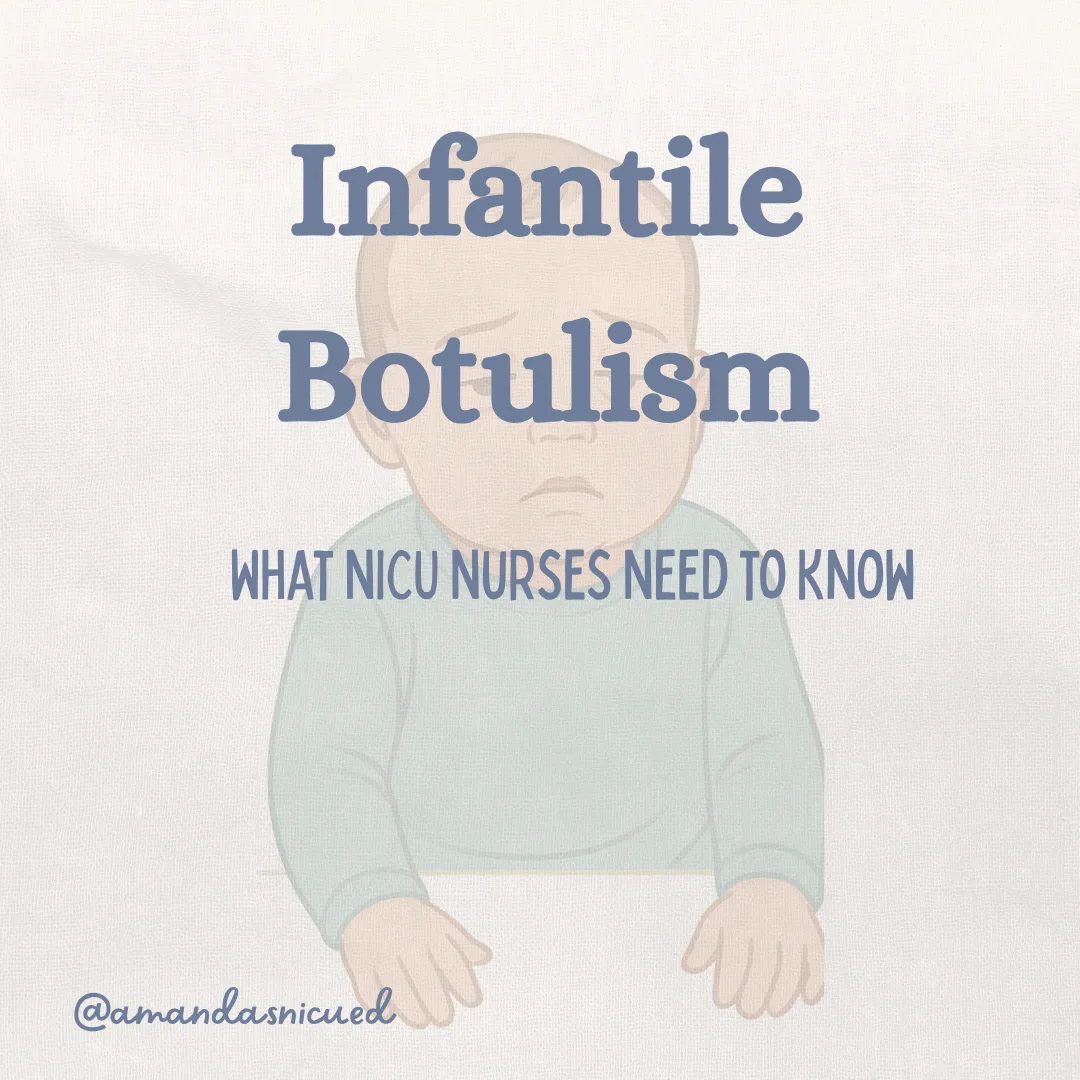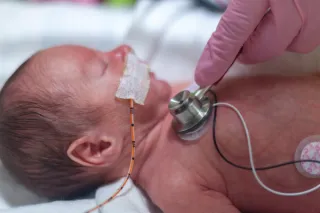
Welcome to Amanda's NICU Education




Hi! My name is Amanda. I'm a NICU nurse, Clinical Nurse Specialist, NICU Educator... basically your NICU BFF. If you want to talk NICU, I'm here for you! I love everything about NICU nursing and I'm eager to learn and share my knowledge with all my NICU friends.
I have been a NICU nurse since 2009 I am currently a Clinical Nurse Specialist in a Level IV NICU in Los Angeles.
I am passionate about educating the next generation of NICU nurses. I share my knowledge through platforms such as Instagram and Facebook and am excited to have you here on my website!
Click on the button below to sign up for my newsletter filled with NICU education and tips for all experience levels.

Not very many people love taking tests but as a self-acclaimed "forever student" who has taken (and passed) five different certification exams I am no longer afraid of tests! "Way to brag", you might be thinking but I want to help YOU pass your certification exam too!
Introducing Amanda's RNC-NIC Success digital course - your ultimate study companion!
Gain unlimited, on-demand access for life, ensuring you're primed to ace your certification exam.
I'm here to help you succeed and I can't wait for you to share with me that you PASSED the RNC-NIC EXAM!!!










Infantile Botulism
🩺 Case Study: When “Poor Feeding” Isn’t Just Poor Feeding

Baby J was born at 35 weeks, a late-preterm infant who initially did well in the NICU. He transitioned to ad-lib feeding and was discharged home thriving.
A few weeks later, his parents brought him back to the hospital because something just wasn’t right. He wasn’t eating well, he was losing weight, and he wasn’t pooping. They also noticed his cry was weaker.
During admission, NICU nurses noticed that he was hypotonic. On admission a sepsis workup is done, as well as electrolyte evaluation. Throughout the night, he became increasingly lethargic, and his temperature drifted down to 35.5°C despite warming measures.
By the next day, he began having intermittent apneic events that required positive pressure ventilation. He required intubation.
Sepsis workup? Normal.
CSF studies? Normal.
Brain imaging? Normal.
Electrolytes? Normal.
But something wasn’t normal—and the nurses were the first to notice the descending pattern of weakness. They saw Baby J losing his head control first, then his suck strength and cry weakening. This pattern, starting from the head and moving down, raises the red flag for botulism.. Maybe this is infantile botulism?
The team contacted the Department of Public Health. Baby J received Botulism Immune Globulin (BabyBIG) on hospital day two—before the stool assay eventually confirmed the presence of botulinum toxin.
Slowly, his tone began to return.
His apneic episodes stopped and he was extubated
His energy and tone began to return.
And by the end of his course, Baby J was feeding again with support, steadily regaining his strength.
🧠 Infantile Botulism: What NICU Nurses Need to Know
Infantile botulism is rare but when it appears, it can look like so many other neonatal conditions that early recognition depends heavily on the vigilance of bedside nurses. With vague symptoms, a wide spectrum of presentations, and the potential for rapid respiratory decline, NICU teams play a crucial role in identifying patterns early enough to change the trajectory.
Have you heard about botulism in the news?
Recently, the Centers for Disease Control and Prevention (CDC) and the U.S. Food & Drug Administration (FDA) announced an investigation into a multistate outbreak of Infantile Botulism in 13 states, with 23 confirmed hospitalizations (as of November 14, 2025) and no reported deaths.
The outbreak is linked to use of ByHeart Whole Nutrition infant formula, prompting a full recall of all lot numbers and formats of the product.
Health officials are urging caregivers to watch for early signs of infantile botulism—specifically poor feeding, loss of head control, difficulty swallowing, weak cry—and to seek care immediately if any of these occur after formula exposure.
🌱 What Is Infantile Botulism? Where Does It Come From?
Infantile botulism occurs when Clostridium botulinum spores temporarily colonize an infant’s gut and produce toxin. This toxin then blocks acetylcholine release at the neuromuscular junction, leading to progressive neuromuscular weakness.
Key points:
It is the most common form of botulism in the U.S., despite being rare overall.
Peak age: < 6 months, with a U.S. mean around 13 weeks.
Spores typically come from environmental dust or soil; only ~15% of cases have a known honey exposure.
Infants are vulnerable because their microbiome is still maturing, making colonization easier.
The hallmark?
A toxin-mediated descending, symmetric weakness that begins subtly and can evolve quickly.
👶 Typical Presentation — and Why It’s Easy to Miss

Presentations varied widely, but several consistent themes emerged.
Common early symptoms:
Constipation — often the earliest sign and frequently overlooked
Poor feeding or weak suck
Lethargy
Hypotonia
Weak or absent cry
Cranial nerve findings: ptosis, sluggish pupils, poor gag, facial diplegia
Less common or atypical presentations described in neonates:
Hypothermia
Seizures or encephalopathy-like behavior
Diarrhea prior to weakness
Apnea without clear etiology
NICU nurses may pick up on the early, subtle signs: the baby "not acting like themselves," losing head control, or becoming too quiet during care. That clinical intuition is invaluable.
🫁 When Infantile Botulism Becomes Critical
70–90% of neuromuscular junctions are affected before symptoms are obvious. Therefore, infants will compensate—until they can’t.
Red flags indicating progression:
Worsening weakness to the face, mouth, and neck
Increased secretions requiring frequent suctioning
Declining airway protection
Hypoxic episodes or apnea
Rising CO₂
Diminished or absent gag
In the case study, the infant ultimately needed intubation and mechanical ventilation due to the progressive decline.
🧪 Why Diagnosis Is So Hard
Infantile botulism often mimics other NICU conditions.
Sepsis
Meningitis
Metabolic disorders
Guillain-Barré syndrome
Transverse myelitis
SMA type I
Myasthenia gravis
And because infants are often afebrile with normal labs and normal MRI/CSF findings, the diagnosis really depends on pattern recognition.
Stool testing for toxin or organism is the gold standard—but results may take days.
💉 Treatment: Why Early Action Matters
Once infantile botulism is suspected, Botulism Immune Globulin Intravenous (BIG-IV, “BabyBIG”) is the cornerstone of treatment.
BIG-IV reduced length of stay from 5.7 weeks to 2.6 weeks in trials.
Earlier administration leads to better outcomes.
It should be given even before laboratory confirmation, if suspicion is high.
BIG-IV is obtained through the California Department of Public Health, even for infants outside the state of California.
Supportive care (ventilation, hydration, nutrition, PT/OT) remains essential, and recovery happens as new motor end plates form.
Prognosis is excellent: mortality <2%, and most infants regain normal development.
🏥 What NICU Nurses Need to Watch For
1️⃣ Patterns of Weakness
Not just hypotonia—look for the descending progression:
Poor head control → weak cry → poor suck → decreased limb movement → respiratory fatigue
2️⃣ Feeding Changes
Infants who previously fed well may suddenly:
Slip off the nipple
Become too tired to latch
Have trouble coordinating suck–swallow–breathe
3️⃣ Constipation
This is often the first symptom and may precede weakness by days.
4️⃣ Cranial Nerve Abnormalities
Ptosis
Diminished facial expression (“expressionless face”)
Poor gag
Drooling
Hypomimia (reduced facial expression)
5️⃣ Autonomic Signs
Pupillary sluggishness
Absent tears
Dry mucous membranes
6️⃣ Respiratory Fatigue
These infants may not cry during procedures, like the IV start—another clue something is off. Monitor for subtle changes in ventilator settings: Requiring Increased ventilatory support and/or a rising CO2 trend on a previously stable baby
7️⃣ Loss of Interactive Behavior
The baby is less engaged, eyes are less following, and facial expressions are flat.
🚨 Quick Reference: When to Suspect Botulism
If you see 2+ of these in an infant <6 months:
Constipation (typically precedes weakness by 3-5 days)
Poor feeding or weak suck
Hypotonia with descending pattern
Weak or altered cry
Cranial nerve findings (ptosis, poor gag, sluggish pupils)
→ Action: Alert medical team, suggest botulism workup, call CDPH for BIG-IV consultation.
📱 Critical Contact for BIG-IV
California Department of Public Health 24/7 Infant Botulism Treatment Program
Phone for Healthcare Providers: 510-231-7600 (Available nationwide, not just California)
Hotline for parents and caregivers: 1 (833) 398-2022. The hotline is open 7 days a week from 7 a.m. to 11 p.m. Pacific Time (PT).
Call BEFORE laboratory confirmation if clinical suspicion is high
🌎 Risk Factors Worth Asking About
Household dust
Living near construction sites
Renovation environments
Well water (rare)
Chamomile (contaminated dried herbs)
Formula or solids in young infants (microbiome shifts)
Low gut motility
Recent viral infection
Hypogammaglobulinemia (rare but documented)
🍯 Honey is still a risk, but it's the minority of cases.
💬 What Parents May Ask (And How to Answer)
"Is my baby's formula safe?" Formula contamination is extremely rare. The current recall is precautionary. If using ByHeart, switch to another brand and watch for symptoms. Most formulas are rigorously tested and safe.
"Will my baby be okay?" With treatment, the prognosis is excellent—less than 2% mortality and most infants recover completely. Recovery takes weeks to months, but babies regain full strength and meet normal developmental milestones.
"Should I stop giving honey to siblings?" Honey is only safe after 12 months of age. Siblings over 1 year can continue having honey. Remember: only ~15% of botulism cases involve honey—environmental spores are the main culprit.
📋 Documentation Tips:
Chart specific observations: "Unable to maintain latch × 3 feeds" vs "poor feeding"
Note timeline: "Constipation × 4 days, now with new-onset ptosis"
Document progression: "AM: held head briefly during diaper change. PM: no head control"
Record subtle findings: "No cry during IV insertion" or "Previously strong cry now barely audible"
🎯 The Bottom Line
Trust your instinct — if something feels off in a previously well infant, investigate
Constipation + hypotonia = red flag — especially with descending weakness
Early BIG-IV saves weeks — don't wait for confirmation if clinical picture fits
Your documentation matters — specific observations help providers recognize the pattern
🔗 Current Outbreak Resources
FDA Recall Information: fda.gov/safety/recalls
CDC Outbreak Updates: cdc.gov/botulism
Report suspected cases: Contact your local health department immediately
References:
Center for Disease Control & Prevention (2025). Infantile Botulism Outbreak Linked to Infant Formula. Retrieved from https://www.cdc.gov/botulism/outbreaks-investigations/infant-formula-nov-2025/index.html on November 15, 2025
Brown, N., & Desai, S. (2013). Infantile botulism: A case report and review. The Journal of Emergency Medicine, 45(6), 842–845. https://doi.org/10.1016/j.jemermed.2013.05.017
Horvat, D. E., Eye, P. G., Whitehead, M. T., Bharucha-Goebel, D., Roth, E., Anwar, T., Tsuchida, T., & Kousa, Y. A. (2023). Neonatal botulism: A case series suggesting varied presentations. Pediatric Neurology, 146, 40–43. https://doi.org/10.1016/j.pediatrneurol.2023.06.004
Dilena, R., Pozzato, M., Baselli, L., Chidini, G., Barbieri, S., Scalfaro, C., Finazzi, G., Lonati, D., Locatelli, C. A., & Cappellari, A. (2021). Infant botulism: Checklist for timely clinical diagnosis and new possible risk factors originated from a case report and literature review. Toxins, 13(12), 860. https://doi.org/10.3390/toxins13120860

December 2023 Certification Review Webinar
NICU Certification Review



Ready to kickstart your journey to becoming a certified NICU nurse?
Look no further!
Grab my FREE E-Book packed with essential study and test-taking strategies for the RNC-NIC.
In the E-Book I give you the resources you need including the link to access the candidate guide, several types of books to study from, some of my favorite strategies, an outline of the content you should review, and a blank calendar for you to make your study plan!
Frequently Asked Questions About the RNC-NIC exam

What is the RNC-NIC?
The RNC-NIC is a competency-based exam that tests the specialty knowledge of nurses in the United States & Canada who care for critically ill newborns and their families.
The RNC-NICU is a nationally recognized certification that recognizes the registered nurse for their specialty knowledge and skill.

Who can take the RNC-NIC exam?
Nurses can take this exam after a minimum of two years experience in the NICU caring for critically ill newborns and their families.

Which books should I use?
I'm glad you asked! There are many excellent books to help you prepare for the RNC-NIC, I gathered ande describe each of them for you in my FREE e-book.
Is there a course to help me study?
Yes! Many hospitals host their own certification course and there are a few online courses. See my RNC-NIC test taking tips E Book for more information
What happens if I don't pass the exam?
If you don't pass the exam on your first try you can try again after 90 days. You will have to reapply after 90 days and pay a retest fee. There is no limit to the number of times you can take the exam (however a candidate can only sit for the exam twice per year).

Can I make more money if I take the RNC-NIC exam and get certified?
Yes! Many hospitals provide a raise or a bonus for nurses with specialty certifications. Hospitals also typically hire at a higher base salary when nurses have a certification.

Find me @amandasnicued on these channels or Email me
hey nurses don't miss out
© Copyright 2024. AmandasNICUEd. All rights reserved. | Terms & Conditions | Privacy Policy Contact: [email protected]

